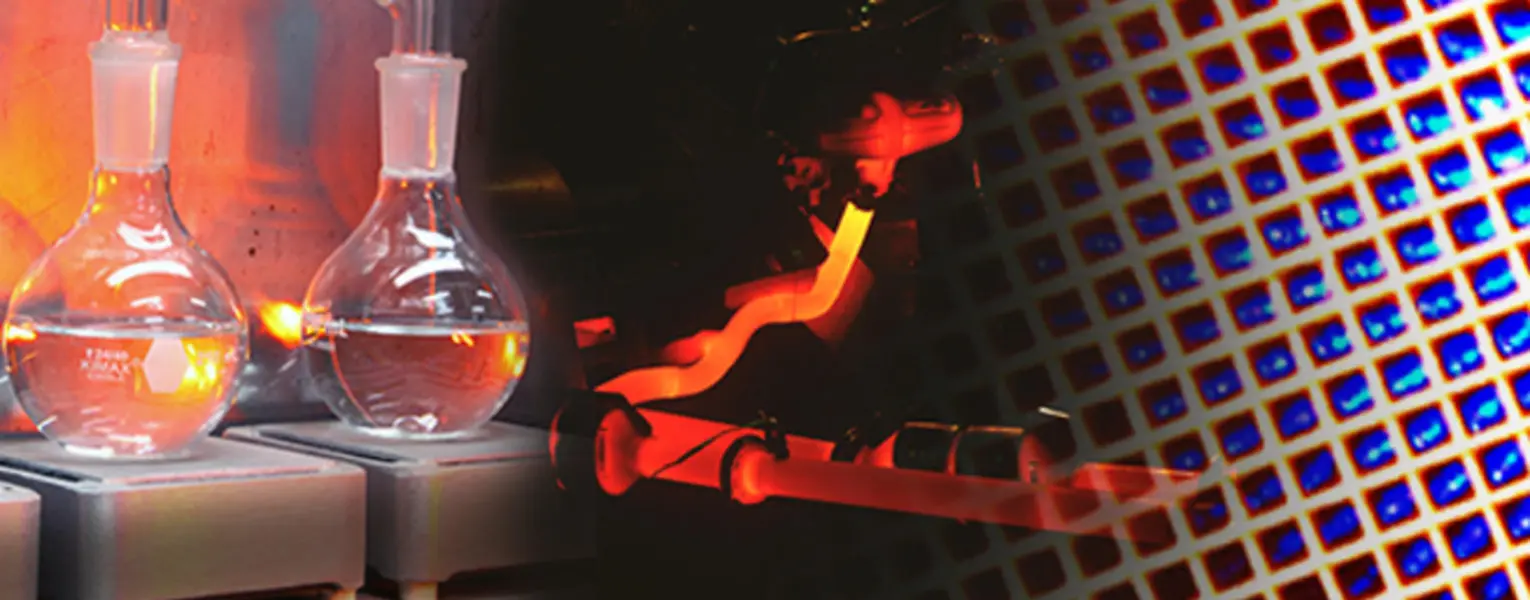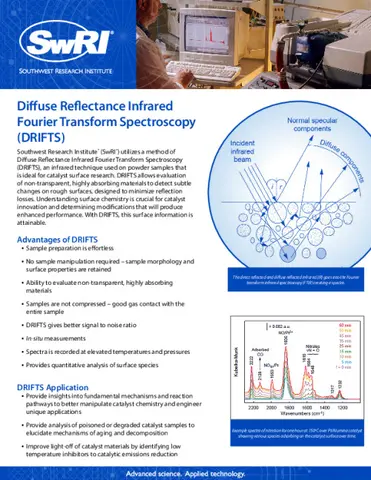The Advanced Combustion Catalyst and Aftertreatment Technologies II (AC2AT-II) program focuses on improving the automotive industry’s understanding of catalysts and emission control systems. This multi-faceted research consortium is leading projects that improve the effectiveness and durability of current aftertreatment systems, as well as developing novel technologies to reduce criteria pollutant emissions and improve fuel efficiency.
The first four-year AC2AT consortium was formed in 2014 with members representing engine manufacturers and affiliated businesses in the automotive industry. The second consortium began in November 2018. Considerable advances were achieved regarding the complex emissions from today’s high-performance, high-efficiency gasoline and diesel engines; modeling emission control systems that use urea and selective catalytic reduction as well as characterizing the chemistry of emissions from advanced combustion systems. SwRI engineers have evaluated techniques for treating low-temperature exhaust gas emissions and model how ash emissions associated with oil ingestion affect aftertreatment components.
The objective of the consortium is to develop the tools and technologies necessary for the synergistic application of catalysts to advanced engine technologies. This consortium will provide a collaborative environment for the fundamental evaluation of advanced combustion engine emissions and novel catalyst technologies. Consortium participants will determine which projects will be undertaken during the program from a number of SwRI-suggested areas of interest. Sharing costs through a consortium gives companies access to more research than would be feasible if funded individually, noted SwRI. Also, members receive royalty free licensing for all intellectual property that may be produced during the consortium. Annual membership for Engine and Vehicle OEMs and supplier companies will be $95,000 per year for the four year consortium.
SwRI has managed a number of automotive consortia including: the High-Efficiency, Dilute Gasoline Engine (HEDGE®) consortium focused on improving gasoline engine technology, Clean High Efficiency Diesel Engine VII (CHEDE-VII) Consortium which is focused on diesel engine technology future engines and the Particle Sensor Performance and Durability (PSPD) Consortium.
View the AC2AT-II Consortium Proposal or contact Scott Eakle at +1 210 522 5095 for more information.
4 Main Projects are Currently Being Executed as Part of the Consortium
Urea-SCR Performance and Deposit Modeling
Goal is to improve current state-of-the-art capabilities of emission control system analysis led design by developing new simulation tools to more accurately predict emission control system performance without the need for fabrication of system hardware. This project focuses on the mechanisms behind urea deposit formation and mitigation, and SCR operatives via surface reactions. The overall objective of this project is to develop a full predictive 3D urea-SCR aftertreatment system model that accurately predicts urea deposit formation, growth, and composition that is coupled to a high fidelity semi-3D SCR simulation that models complete SCR system performance. Validation of the CFD model is being conducted by characterizing various urea dosing system architectures.
Detailed Characterization of Emissions from Advanced Combustion Engines
Goal is to understand the detailed chemical composition of emissions from advanced technology combustion systems. These combustion systems are of interest to engine manufacturers for their potential for reduced fuel consumption. In order to design and develop optimal emission control systems, the detailed emission chemistry must be well understood.
Low Temperature Catalysis and Emission Control System Design
Goal is to propose and evaluate potential solutions for treating exhaust gas emissions at temperatures less than 200°C. Increasingly stringent emission regulations and highly efficient engine operation are resulting in an increased requirement for low temperature catalysis. This project is developing new catalyst and system level strategies to improve low temperature performance for conventional and advanced combustion regimes.
Model Development for Predicting Ash Emission Rates and Impact on Emission Control
Goal is to develop detailed models to predict the emissions of ash from internal combustion engines based on location and rate of oil ingestion. Model includes prediction of ash physical/chemical properties and the impact on aftertreatment components including DOC, DPF, SCRF, SCR, GPF, TWF, etc.
Engine Test Bench Facilities Available
- Compression Ignition Test Facility
- 15 L Cummins ISX
- Dilute lean combustion
- 15 L Cummins ISX
- 13 L Navistar Maxxforce
- Dilute lean combustion
- Lean dual fuel Natural Gas/Diesel
- RCCI
- 6.8 L John Deere PSS6068
- Dilute lean combustion
- 1.9 L GM JTD
- Dilute lean combustion
- RCCI
- Spark-Ignited Test Facility
- 11.9 L Cummins ISX12 G
- Low pressure loop EGR
- Natural gas
- 2.0 L GM LHU
- Dedicated EGR®
- Gasoline
- Natural Gas
- Propane
- 1.6 L PSA EP6DT
- Low pressure loop EGR
- Gasoline
- 11.9 L Cummins ISX12 G
- Aftertreatment R&D Test Facility
- 6.7 L Cummins ISB
- Accelerated ash loading
- 6.7 L Cummins ISB
Analytical Emissions Laboratories
- Emissions Chemistry Laboratory
- Particle Science and Technology Laboratory
Catalyst Evaluation Test Facilities
- Universal Synthetic Gas Reactor (USGR®)
- Exhaust Composition Transient Operation Laboratory (ECTO-Lab™)
- Spatially resolved capillary FTIR/MS
- Diffuse Reflectance Infrared Fourier Transform Spectroscopy (DRIFTS) for surface chemistry analysis
- Transmission Electron Microscopy (TEM)
- Proton Induced X-Ray Emission (PIXE)
- Scanning Electron Microscopy (SEM)
- X-Ray Diffraction (XRD)
- BET surface area
- DPF inspection
- Bore scope
- Ultrasound
- CT-SCAN
Consortium Contractual Details
- 4 year consortium, renewable on an annual basis
- Interested parties can join the consortium any time during the four-year period
- SwRI will aggressively pursue patents for technology developed as part of AC2AT
- All consortium participants are granted a royalty-free to all SwRI technology developed under the consortium
- Annual membership fee of $95,000 USD
- Impact of annual contribution is multiplied by number of members in consortium
- SwRI’s internal research funds will supplement contributions from annual client dues, and data will be shared with consortium members







